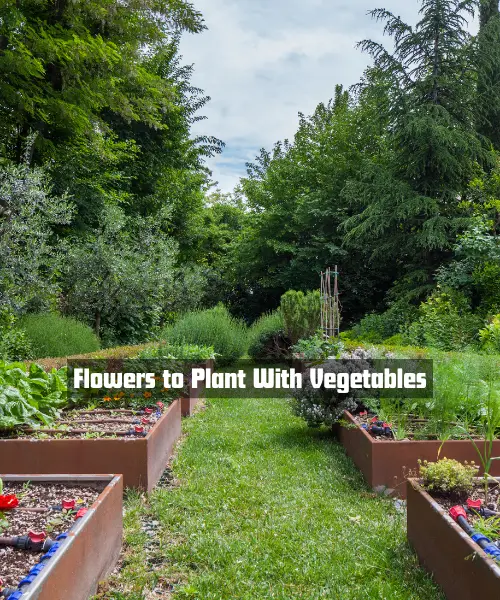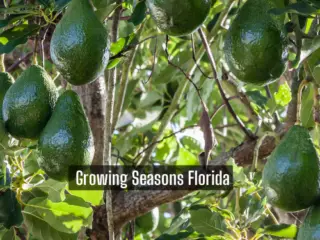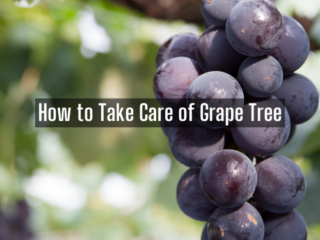As gardeners, we often focus our efforts on growing lush vegetable patches, meticulously tending to the plants that will provide us with a bountiful harvest.
However, have you considered the benefits of incorporating flowers into your veggie garden?
Companion planting, the practice of growing certain plants together for their mutual benefit, can offer a harmonious and productive environment for both your edible crops and their floral companions.
Not only do these vibrant blooms add a touch of beauty to your garden, but they can also attract beneficial insects, deter pests, and even enhance the growth and flavor of your vegetables.
We will look at some of the greatest flowers to plant with your favorite vegetables in this blog post, which will result in a genuinely harmonious and aesthetically pleasing garden haven.
Marigolds: The Versatile Workhorses

Marigolds are perhaps one of the most well-known and beloved companion plants for vegetable gardens. These cheerful blooms are more than just a splash of color; they possess remarkable pest-repelling properties. The strong scent produced by marigolds can deter nematodes, whiteflies, and even rabbits from feasting on your precious crops. Additionally, their roots release a substance called alpha-terthienyl, which can inhibit the growth of harmful soil nematodes.
Marigolds are particularly beneficial when planted alongside tomatoes, peppers, and cucumbers. Their pungent aroma can confuse and deter pests that might otherwise target these vegetables. Moreover, marigolds are believed to improve the overall health and flavor of tomatoes, making them a must-have in any tomato patch.
Nasturtiums: The Edible Beauties
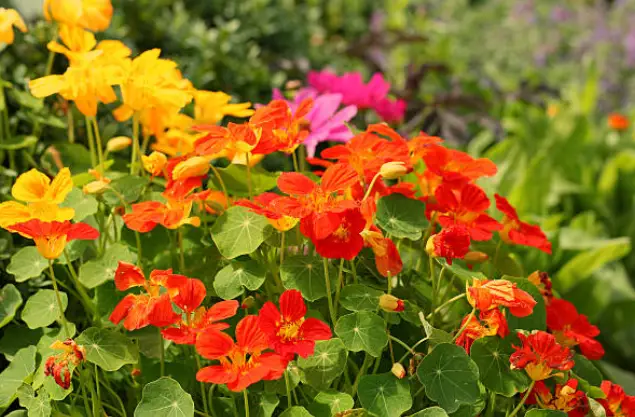
Nasturtiums are not only visually stunning with their vibrant, jewel-toned blooms, but they also offer a delightful peppery flavor that can be enjoyed in salads or as a garnish. Beyond their culinary appeal, nasturtiums are excellent companions for a wide range of vegetables, thanks to their ability to repel aphids, whiteflies, and other destructive pests.
These resilient flowers thrive in poor soil conditions and can even act as a trap crop, luring pests away from your more delicate veggies. Plant nasturtiums alongside lettuce, radishes, and members of the cabbage family for an extra layer of protection against common garden nuisances.
Calendulas: The Edible Pest Deterrents
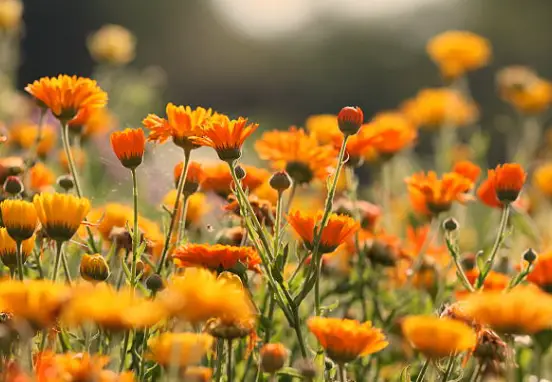
Calendulas
Calendulas, also known as pot marigolds, are another edible flower that can serve as a valuable companion in the vegetable garden. Their bright orange or yellow blooms add a pop of color while also repelling a variety of pests, including tomato worms, asparagus beetles, and even root nematodes.
These versatile flowers can be planted alongside tomatoes, beans, and members of the squash family, offering protection and potentially improving the growth and flavor of your crops. Additionally, calendulas can be used to create a natural insect repellent by soaking the petals in water and spraying the mixture onto your plants.
Sunflowers: The Towering Allies
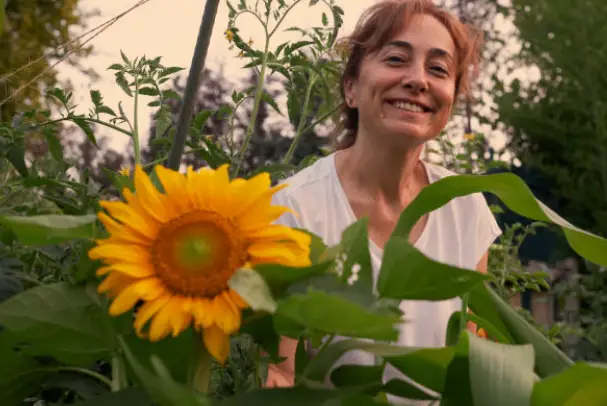
While sunflowers may seem like an unlikely companion for vegetables, these towering beauties can provide a range of benefits to your garden. Their sturdy stems and broad leaves create shade for heat-sensitive crops like lettuce and spinach, helping to extend their growing season and prevent bolting.
Furthermore, sunflowers are excellent at attracting beneficial insects, such as ladybugs and lacewings, which feed on aphids and other pests that can damage your veggies. Plant sunflowers alongside cucumbers, melons, and squash for added protection and support.
Sweet Alyssum: The Pollinator’s Delight

Sweet alyssum, with its delicate white or purple blooms, may seem unassuming, but it packs a powerful punch when it comes to attracting pollinators. These tiny flowers are irresistible to bees, butterflies, and other pollinating insects, which play a crucial role in ensuring a bountiful harvest.
Plant sweet alyssum alongside your fruiting vegetables, such as tomatoes, peppers, and eggplants, to promote better pollination and fruit set. Additionally, sweet alyssum can help deter aphids and other pests through its strong scent.
Borage: The Nutrient-Boosting Companion
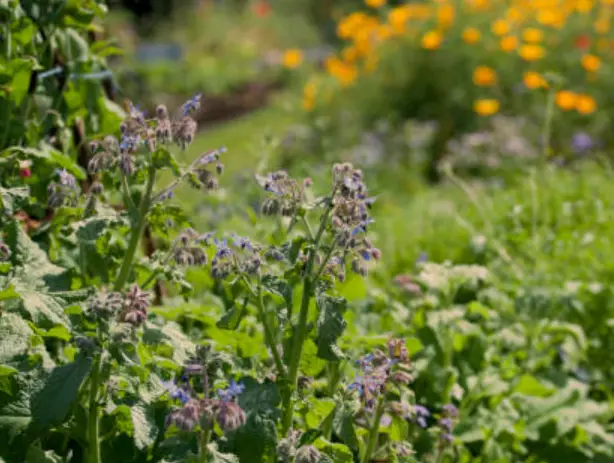
Borage, with its striking blue star-shaped flowers, is a versatile companion plant that offers a multitude of benefits. Not only does it attract pollinators with its nectar-rich blooms, but it also helps to improve the overall health and nutrient uptake of your veggies.
Borage is particularly beneficial when planted alongside tomatoes, squash, and strawberries. Its deep roots help to aerate the soil, allowing for better nutrient absorption and water retention. Additionally, borage is said to enhance the flavor and sweetness of neighboring vegetables and fruits.
Cosmos: The Pest-Confusing Beauties

Flowers to Plant With Vegetables
Cosmos, with their delicate petals and vibrant hues, are not only visually appealing but also serve as excellent companion plants for vegetable gardens. These flowers are known to attract beneficial insects like lacewings and parasitic wasps, which prey on harmful pests like aphids and caterpillars.
Plant cosmos alongside members of the cabbage family, such as broccoli, kale, and cauliflower, to help deter cabbage worms and other destructive pests. Cosmos are also believed to improve the overall health and growth of nearby vegetables by releasing nutrients into the soil.
Zinnias: The Butterfly Magnets
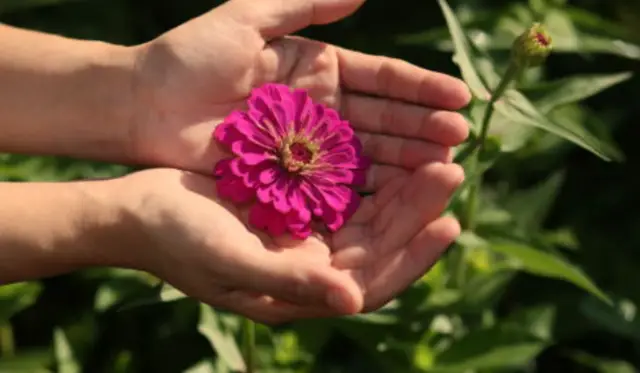
Zinnias, with their vibrant blooms in shades of red, orange, yellow, and pink, are a true delight for both gardeners and pollinators alike. These cheerful flowers are particularly attractive to butterflies, which not only add beauty to your garden but also play a crucial role in pollinating your veggies.
Plant zinnias alongside crops like cucumbers, melons, and squash to encourage better pollination and fruit production. Additionally, zinnias can help deter certain pests, such as cucumber beetles, through their strong scent.
Incorporating Companion Flowers: Tips and Considerations

When planning your vegetable garden, consider dedicating a section or border specifically for companion flowers. Not only will this create a visually stunning display, but it will also ensure that your veggies receive the full benefits of their floral neighbors.
Remember to pay attention to the specific needs of each plant, such as sunlight requirements, water needs, and soil preferences, to ensure they thrive together. Additionally, consider staggering bloom times to provide a continuous supply of nectar and pollen for beneficial insects throughout the growing season.
Conclusion
You may build a lovely, sustainable ecosystem in your vegetable garden that not only pleases the senses but also encourages healthier, more productive crops by adding flowers.
From pest deterrence to pollinator attraction and improved soil health, these floral companions offer a multitude of benefits that can elevate your gardening experience. Embrace the magic of companion planting and watch as your garden transforms into a thriving, harmonious oasis brimming with vibrant blooms and bountiful harvests.

